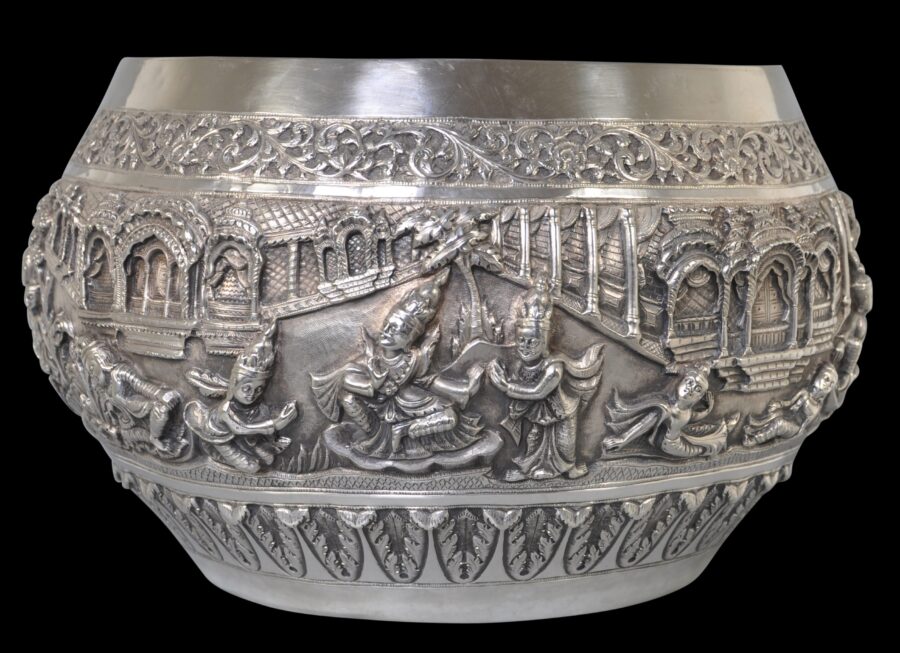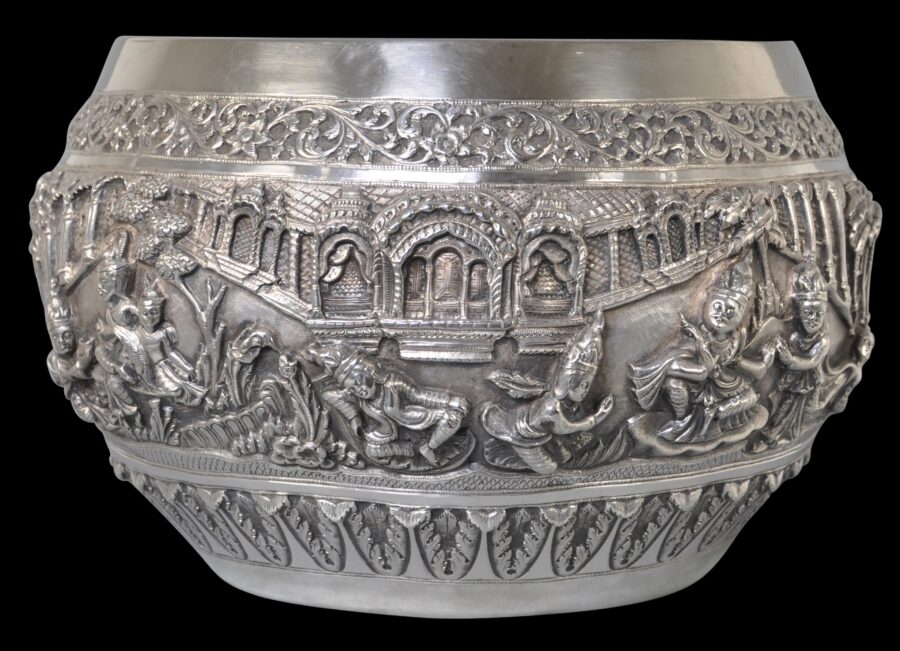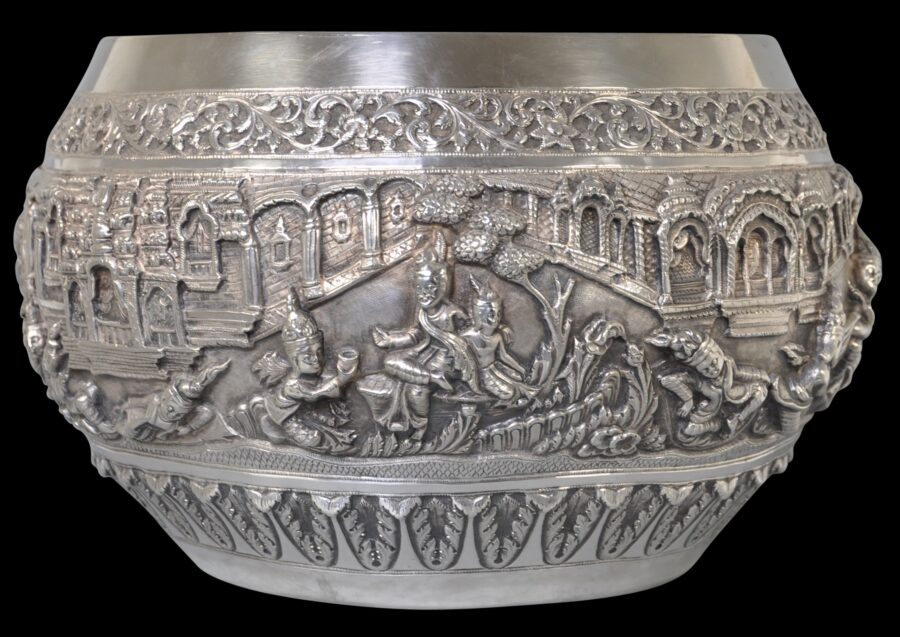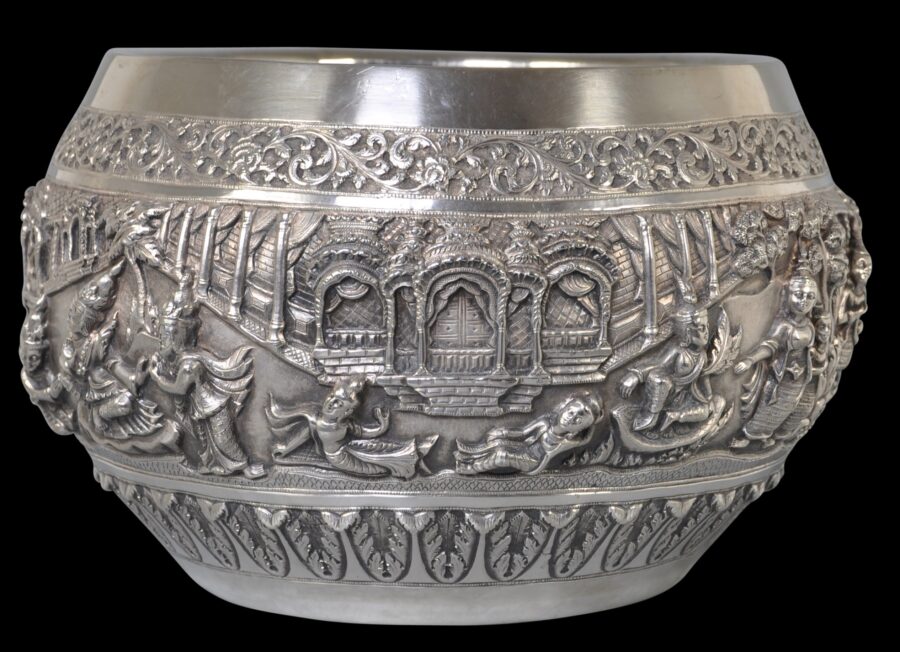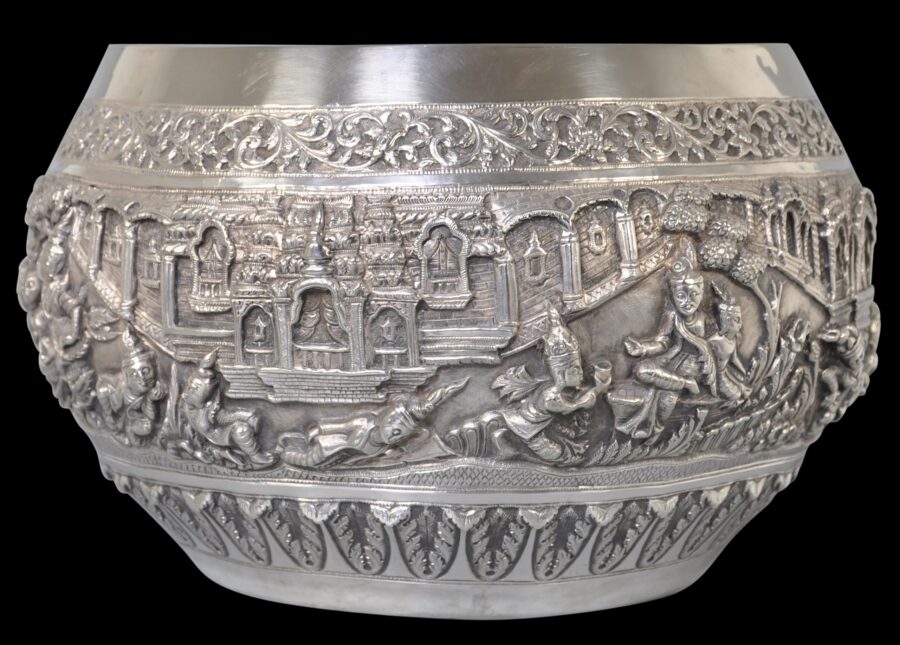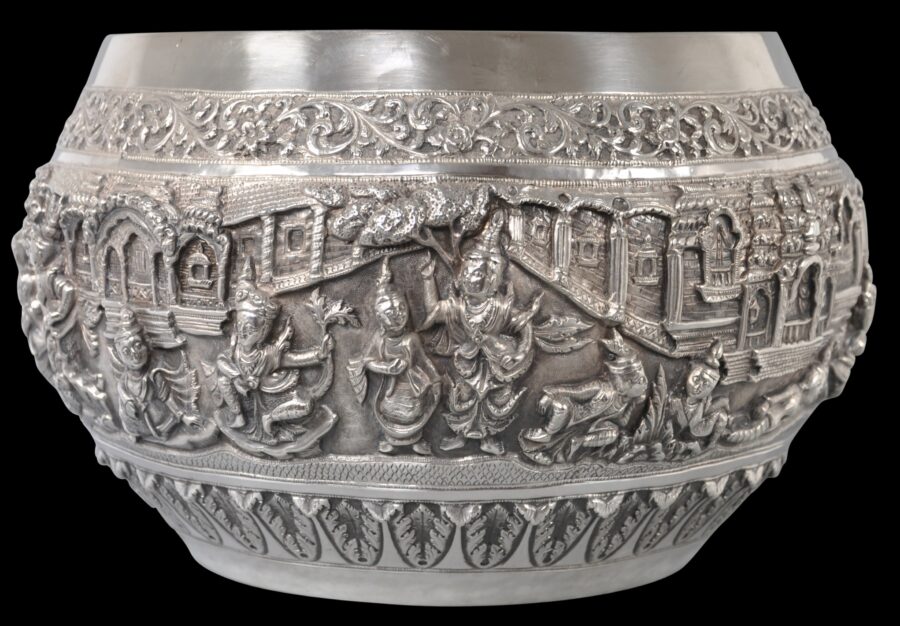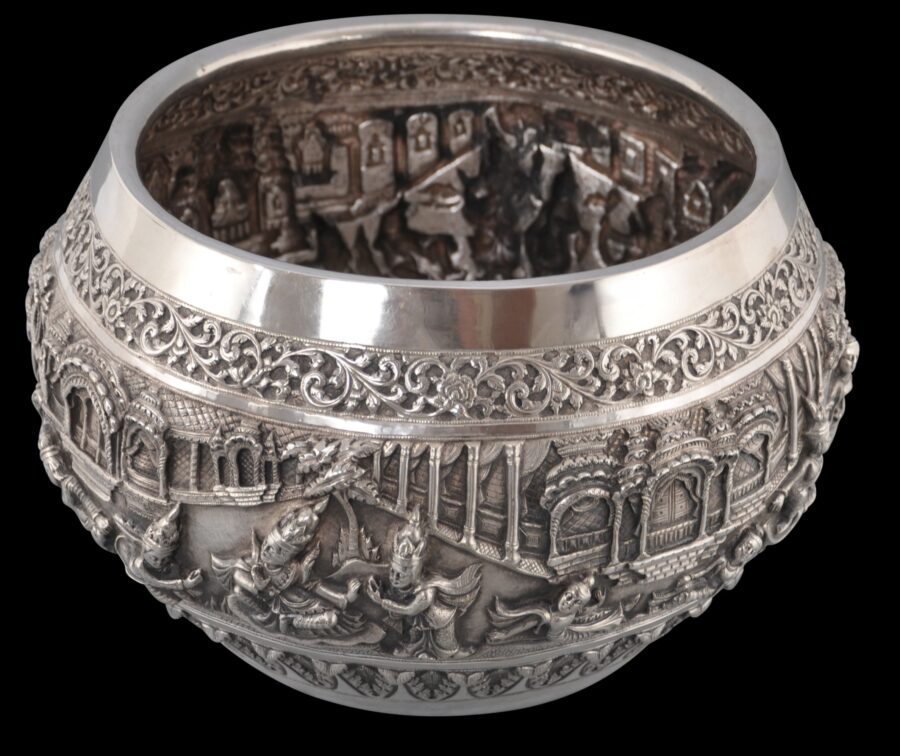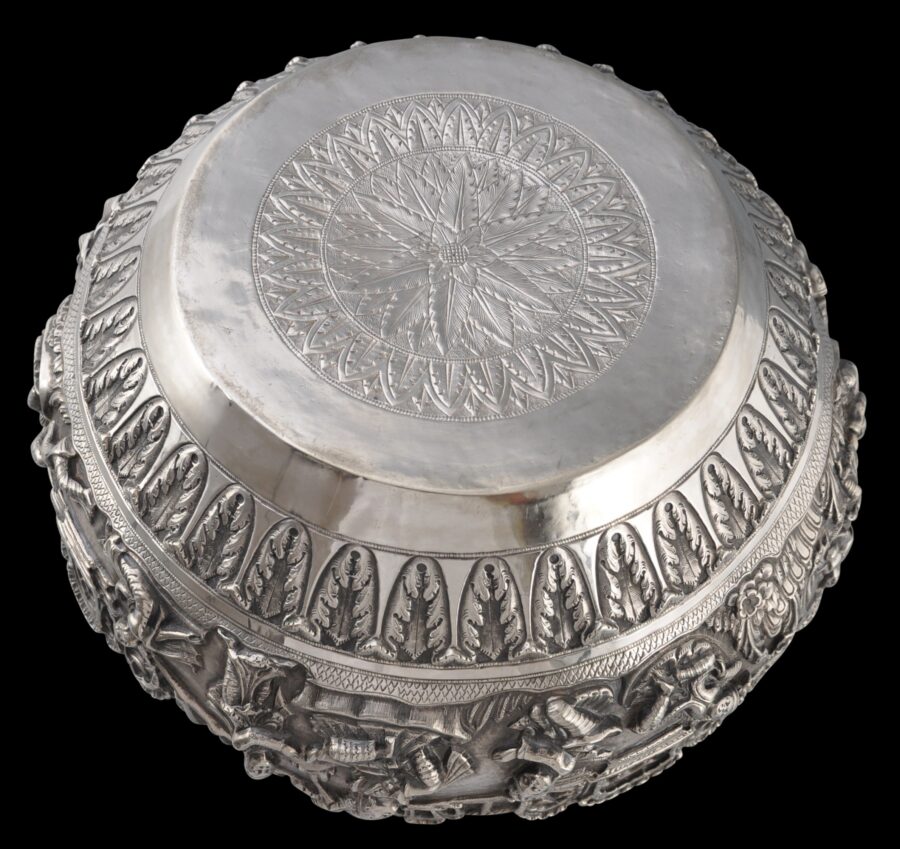This large silver bowl has an Indian form in that it has a convex shape but the repousse work is very much Burmese.
There are four narrative scenes, all conducted before a pavilion of arches and stairs. The buildings depicted are more Indian than Burmese in style. Multiple figures are shown, all in Burmese court dress. It is likely that the narrative scenes relate to one or other of the Jataka stories.
The top of the bowl is bordered by a wide band of floral and leaf scrollwork above which there is a plain border and an overturned rim which is very much in the Indian style.
The lower register comprises a wide acanthus leaf border.
The base is engraved with a leafy, floral star burst motif.
It is likely that this bowl was made in Burma by a silversmith familiar with Indian silversmithing styles (this would not be unusual because at the time, Burma was administered by the British as part of colonial India and Burma was usually included as a subsection of India when it came to colonial handicrafts and ‘industrial’ arts exhibitions held in India, Rangoon and London), or by a Burmese silversmith operating in India, perhaps in Lucknow.
The bowl has the usual holes in the repousse work – a function of hammering out the silver as far as possible to give the figures as much high relief as possible.
References
Fraser-Lu, S., Silverware of South-East Asia, Oxford University Press, 1989.
Fraser-Lu, S., Burmese Crafts: Past and Present, Oxford University Press, 1994.
Green, A., Burmese Silver from the Colonial Period, Ad Illisvm, 2022.
Owens, D.C., Burmese Silver Art: Masterpieces Illuminating Buddhist, Hindu and Mythological Stories of Purpose and Wisdom, Marshall Cavendish Editions, 2020.
Tilly, H.L., The Silverwork of Burma (with Photographs by P. Klier), The Superintendent, Government Printing, 1902.
Tilly, H.L., Modern Burmese Silverwork (with Photographs by P. Klier), The Superintendent, Government Printing, 1904.


